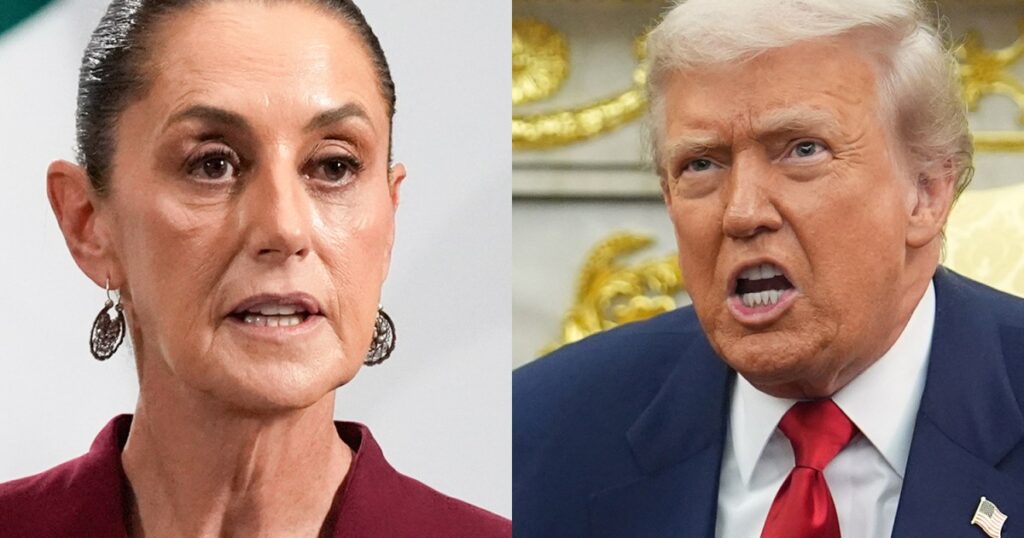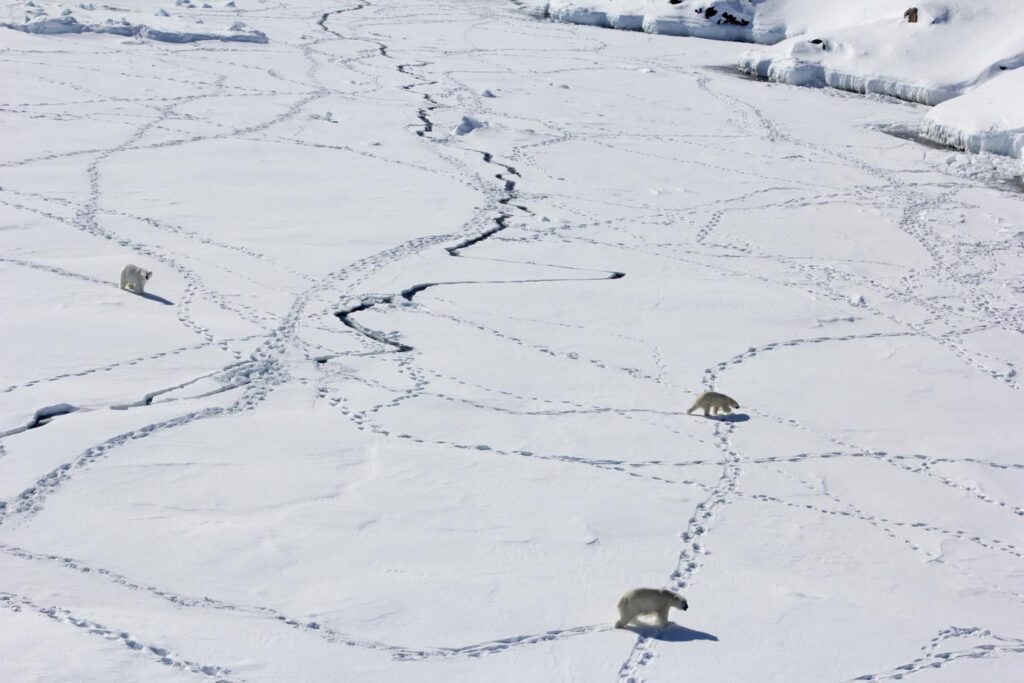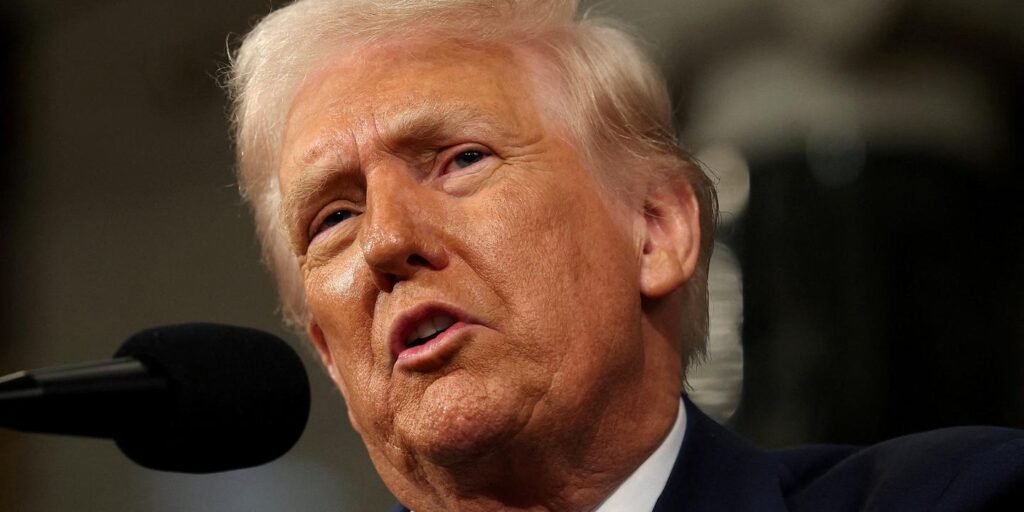As United States President Donald Trump promises to crack down on the illegal drug trade from Latin America, US troops appeared to arrive this week on a beach in northeast Mexico where they installed signs declaring the area “restricted” by the US Department of Defense.
Trump and his Mexican counterpart, Claudia Sheinbaum, have been engaged in a back-and-forth war of words over the threat of US strikes on what it says are drug cartels in Mexico.
Here is a closer look at what has happened and what it all means.
What happened?
On Monday, unidentified men arrived via boat at a beach in northeast Mexico, where they planted signs in the sand reading: “Warning: Restricted Area” in English and Spanish.
The precise location of the beach has not been confirmed by either side, but a video circulating on social media and local news purports to show Mexican marines removing the signs. The video is described as footage from a beach frequented by locals and fishermen, known as Playa Bagdad, in an area where the Rio Grande, a river which originates in south-central Colorado in the US, flows into the Gulf of Mexico. Al Jazeera has not been able to verify this video.
🚨 Incident in Playa Bagdad, Matamoros
Fishermen reported that alleged US military or personnel crossed the Rio Grande by boat and placed 6 “Department of Defense Restricted Area” signs.
The Mexican Navy immediately removed them and reestablished the… pic.twitter.com/v8ai7eKNCO— Azteca (@MORRIS80766176) November 18, 2025
The signs stated that the area was Department of Defense property and had been declared restricted by “the commander”. They also stated that “unauthorized entry is prohibited” and “if you are found here, you may be detained and searched”. They additionally prohibited photography or drawings.
The Gulf of Mexico is bound by Cuba; eastern states of Mexico, including Tamaulipas, Veracruz, Tabasco, Campeche, Yucatan and Quintana Roo; and states on the Gulf Coast of the US: Texas, Louisiana, Mississippi, Alabama and Florida.
In January, Trump signed an executive order changing the name of the Gulf of Mexico to the Gulf of America, which was rejected by Mexico. The change has been reflected on Google Maps for users in the US.
How has Mexico responded?
Late on Monday, the Ministry of Foreign Affairs said the navy had removed the signs because they were on Mexican territory.
On Tuesday, Sheinbaum said the International Boundary and Water Commission (IBWC) would get involved to resolve the dispute. “The river changes its course, it breaks loose, and according to the treaty, you have to clearly demarcate the national border,” she said during her daily news briefing.
What is the IBWC?
Established in 1889, the IBWC is a binational agency which oversees the border and water treaties between the US and Mexico.
It comprises a US section which operates under the foreign policy guidance of the Department of State, and a Mexican section, supervised by its Foreign Ministry.
The body is responsible for sharing and regulating the Rio Grande and Colorado River waters; building and operating dams and reservoirs; flood control; addressing border sanitation and water quality issues; and maintaining and marking the international boundary.
The IBWC has resolved border disputes between the US and Mexico in the past by overseeing treaties demarcating boundaries.
In 1963, the 100-year-old Chamizal dispute over a 600‑acre (243-hectare) tract near El Paso and Ciudad Juarez in the US was resolved by the Chamizal Convention. The disputed land was returned to Mexico, and it was agreed that the Rio Grande would be rechannelled to create a fixed, stable boundary between the two countries.
The most recent treaty the IBWC oversaw was signed in Mexico in 1970 to resolve boundary disputes and maintain the Rio Grande and the Colorado as the international boundary.
What has the US said about this incident?
On Tuesday, the US Embassy in Mexico shared a comment from the Pentagon, stating that US “contractors” had placed signs beside the Rio Grande, marking “National Defense Area III”.
“Changes in water depth and topography altered the perception of the international boundary’s location,” the statement said. “Government of Mexico personnel removed 6 signs based on their perception of the international boundary’s location.”
The Pentagon added that the contractors would work with “appropriate agencies to avoid confusion in the future”.
National Defense Areas (NDAs) are US military zones along the US-Mexico border, managed by the Defense Department.
On May 1 this year, the US Northern Command announced that a new 260-mile (418km) NDA had been established along the southern border of Texas with Mexico.
“The establishment of a National Defense Area increases our operational reach and effectiveness in denying illegal activity along the southern border,” the release quoted General Gregory Guillot, the commander of the Northern Command.

Where are the NDAs positioned?
The NDAs were established under a presidential memorandum Trump signed in April this year, titled “Military Mission for Sealing the Southern Border of the United States and Repelling Invasions”.
The order directs the Defense Department to take a more direct role in securing the US-Mexico border. The memorandum directly authorises the department to establish NDAs.
The US Northern Command website states that the Defense Department enforces a “controller perimeter” in the NDAs to “repel unlawful mass migration, narcotics trafficking, migrant smuggling, human trafficking, and other cross-border criminal activities”. Suspected trespassers can be detained in NDAs, but then must be passed to the custody of local law enforcement.
According to the website, there are currently three operational NDAs besides the new one in Texas. One of these spans the Cameron and Hidalgo Counties in Texas. Others are in New Mexico and Yuma, close to the borders with California and Mexico.
What is the wider context?
The US has deployed a large military force, including B‑52 bombers and elite special operations troops, to the Caribbean in recent months, citing security concerns and the threat of an “invasion” by Venezuelan drug gangs. Trump is also considering land attacks in Venezuela to curb the flow of illegal drugs and has authorised CIA covert operations in Venezuela for the same purpose.
Since September 2, the US has conducted at least 21 military strikes on alleged Venezuelan drug boats in the Caribbean and the eastern Pacific, killing about 80 people. Now, Trump seems to have turned his attention to Mexico.
On Monday, Trump threatened to launch strikes on drug cartels in Mexico.
“Would I want strikes in Mexico to stop drugs? OK with me, whatever we have to do to stop drugs,” Trump told a reporter during an Oval Office meeting between Trump and FIFA President Gianni Infantino.
“I looked at Mexico City over the weekend. There’s some big problems over there.”
During her daily press briefing on Tuesday morning, Sheinbaum responded to Trump’s comments on Sunday about possible US intervention in Mexico. “It’s not going to happen,” she said.
Sheinbaum said she had told Trump and Secretary of State Marco Rubio multiple times during telephone conversations that Mexico does not want US intervention on Mexican soil.
“He has suggested on several occasions or has said, ‘We offer you a United States military intervention in Mexico or whatever you need to combat criminal groups’,” she explained.
Sheinbaum said she would accept collaboration and intelligence sharing with the US military, but she reiterated that no outside intervention would be permitted in the country.
“We do not accept an intervention by any foreign government,” Sheinbaum continued. “I’ve told him on the phone. I’ve said it with the State Department, with Marco Rubio.”


